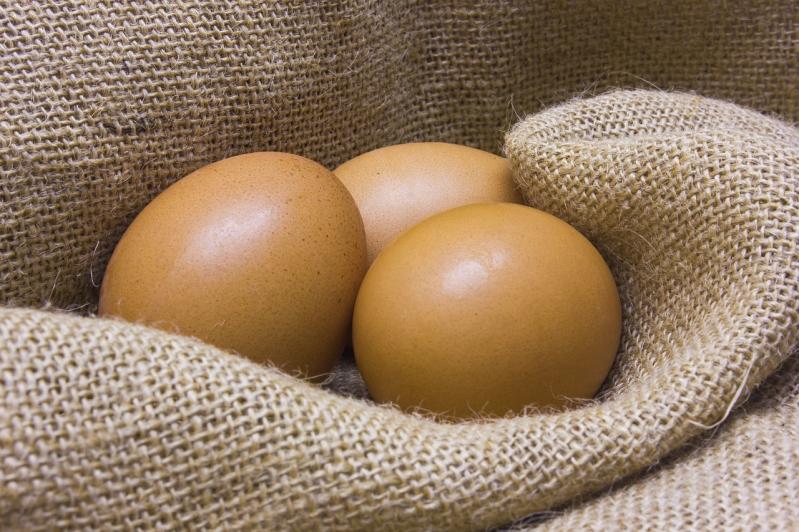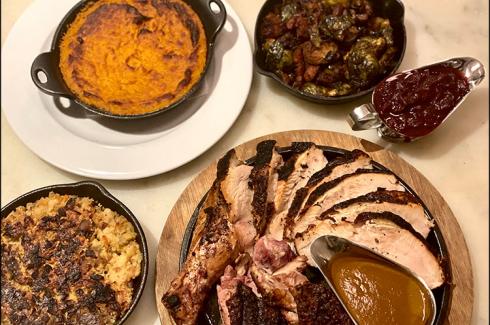If there is ever an egg season, it occurs now, in early spring. The symbolism of germinating, hatching and rebirth was celebrated by primitive man and embraced by modern religions. The folklore, if not the ritual, of Easter rejoices in the egg. In every Christian nation it becomes an artform, its culinary attributes outdistanced by the spell of talented brush.
The traditions of Judaism also demand eggs in spring. They are not for decoration. The Passover service requires a roasted egg among symbolic foods at the table, commemorating one of the temple offerings. During the eight day holiday, no leavens are permitted in baking. Eggs, separated, beaten, folded, baked, appear at every meal.
Refinements
A prerequisite for Easter decoration is the knack of inducing the yolk and white to both exit from the shell via pinprick, leaving the perfect hollow oval to be painted or otherwise adorned. Passover cooking can only be accomplished with mastery of separating yolk from white. Further refinements include beating the whites to a sturdy chiffonnade.
The egg can stand alone, decorated or delicious, or it may be the essential ingredient to bind, lighten or enrich another dish. For cooking purposes, large eggs are the most practical. About five whole large eggs or the whites of about eight make one cup.
The yolks are more heavily endowed with nutritive components than the whites, containing virtually all the minerals and 50 per cent more protein. They also harbor the fat which many diets seek to avoid.
Beneath the shell there is no difference between white and brown eggs. Egg production today is often a highrise semi-industrial affair in which the hen is little more than a robot. The eggs may be chemically treated or kept in storage before reaching the marketplace. One must have more confidence in the farm-fresh locally-raised eggs sold in many markets in the area, usually in old-fashioned drab gray boxes.
Delicate Disposition
Eggs have a delicate disposition. They readily assume foreign flavors. In Turkey they are cooked with onion skins until they become coffee-colored. The Chinese bury them for a week to create “thousand-year-old eggs,” one of that cuisine’s less esthetic culinary surprises.
Gentle heating will cause eggs to thicken and congeal. To render them more amenable to performing properly, allow them time to warm in the room. However, too much or the wrong kind of cooking can granulate a custard or rubberize an omelet.
We have lately been enjoying an all-purpose egg dish which is equally inviting for breakfast, lunch, dinner or snack or hors d’oeuvre, hot or cold. Variations of the theme is a mandate worth pursuing. The item is tortilla. Not Mexican corn-cake tortilla but Spanish tortilla, a kind of Spanish omelet. (The onion-pepper-tomato filled dish which we call Spanish omelet is closer, after all, to the French-Basque piperade.)
The tortilla in question is thick, round and well-filled. The eggs encrust the exterior while remaining richly creamy within. Unlike a French omelet, which can come out looking like an unmade bed, this one requires timing but no particular coordination for its perfection.
Tortilla
3 Tbsp. olive oil
2 large potatoes, scrubbed and cut into small dice (peeling is optional) making 2-21/2 cups potato
2 large onions, chopped, making about 2 cups onion
Salt and pepper
6 large eggs
1 Tbsp. chopped parsley
Heat the oil in a heavy nine-inch skillet. Add the potatoes and onions and cook very slowly, covered, until they are tender but not brown. Meanwhile, beat the eggs in a large bowl until they are well-blended. When the potatoes have become tender, season to taste with salt and pepper and stir in parsley.
Allow to cool briefly and then stir into the eggs, draining off as much oil as possible. There should be a thin film of oil in the pan. Reheat the oil in the skillet. When it is quite hot, pour in the egg mixture, filling the pan evenly, and cook until eggs have set and are golden brown on the bottom but are still creamy on top, about four to five minutes.
Place a large platter over the pan. Holding both pan and platter, quickly invert the omelet onto the platter and then slide it back into the pan. Continue cooking until the other side is golden. Remove from heat and invert onto a warm serving dish or serve directly from the skillet.
Serves four.
NOTE: Omelet may also be served at room temperature or cold. It is one of your more interesting contenders for lunchbox honors. Ham, sausage, poultry, fish, herbs, vegetables or olives may be used as additional or alternate filling ingredients; tomato or sour cream sauces as garnish.





